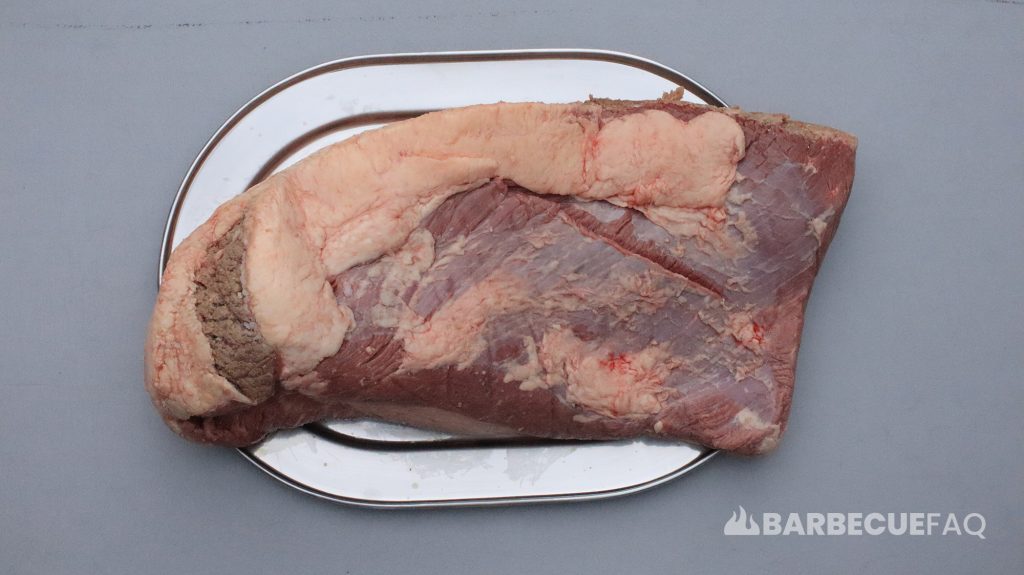The Beef plate primal is found below the rib primal in the forequarter of the cow – behind the brisket and in front of the flank.
Most cuts from the short plate are known to have a great quality-price ratio and are easy to smoke or grill.

The plate primal is also called the “Short Plate” because it does not contain the Brisket.
What are the Sub-primal Cuts from the Plate Primal?
The short plate produces 5 sub-primal cuts (secondary or portion cuts):
1. Hanger steak
The hanger steak are the “legs” of the diaphragm.
The diaphragm is a singular muscle that is cut into two separate cuts of meat – one being the hanger steak the other being the outside skirt steak (below).

Traditionally, this cut was taken home by the Butcher (hence being called a Butcher’s Cut) and still isn’t found in many grocery stores.
2. Inside skirt steak
The inside skirt steak comes from the inner wall of the steer’s chest, running parallel to the belly.
The inside skirt steak is wider, but smaller than outside skirt steak – it’s also less tender.

3. Outside skirt steak
Outside skirt steak is sourced from the outer wall of the steer’s chest.
The outside skirt steak is typically found in restaurants and steakhouses – it’s more desirable because it’s more tender and minerally tasting.

4. Plate short ribs
Plate short ribs are sourced from ribs 6, 7, and 8 and are cut just below the rib.
Depending on where you live, Plate short ribs can be found both in grocery stores and at BBQ restaurants.

Butchers isolate these ribs specifically due to the serratus ventralis muscle – which is one of the most tender on the entire cow.
5. Flanken-style short ribs
This style of ribs is cut across the bones (flanken) as apposed to between them, which would be called “English cut.”
“English cut” short ribs are popular with ribs from the chuck as apposed to plate ribs.

Remaining Meat?
Any meat that remains is then used to make ground beef.
Bones are also sold for things like broth.




